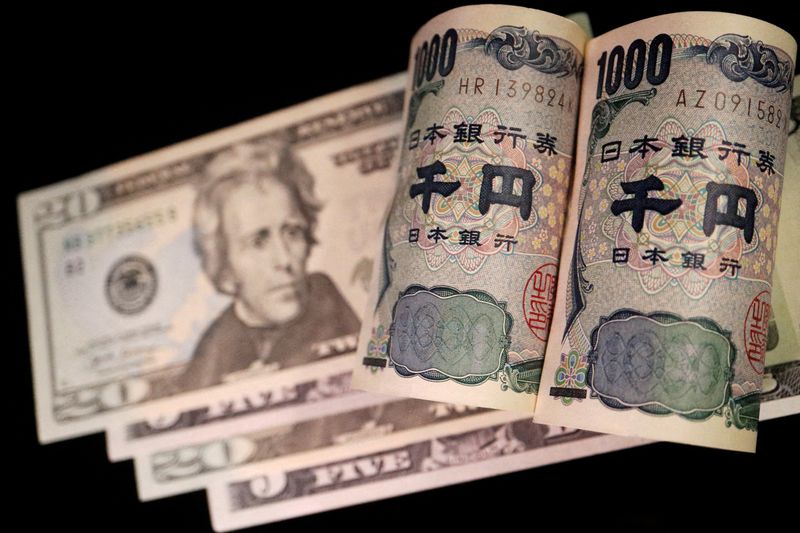By Herbert Lash and Gertrude Chavez-Dreyfuss
NEW YORK (Reuters) -The dollar on Wednesday fell for the first time in six days, as investors consolidated gains after Federal Reserve officials repeated the interest rate-cutting cycle is on hold pending new economic data, while the monetary easing outlook for other major central banks remained unchanged.
The greenback also dropped from 5-1/2-month highs hit on Tuesday. {{2126|The dodollar index was last down 0.4% at 105.89. So far this year, the index has gained about 4.7%.
"I see today's move as more of a slight correction than anything. To put things into context, the dollar spot index is still just off its highest point since mid-November," said Helen Given, FX trader at Monex USA in Washington.
"(Fed Chair Jerome) Powell's panel yesterday was the big market-mover for the week, and now traders appear to be hedging on the other side of the market, so we're seeing this pullback today. We're reaching a point where markets have priced in the downshift on cuts from the Fed, so flows are a bit more normalized."
Top U.S. central bank officials, including Powell on Tuesday, have provided little indication into when rates may be cut, saying instead that monetary policy needs to be restrictive for longer.
Recent data showed the U.S. economy remains stronger than expected, leading investors to reduce their bets on future rate cuts. This was again evident in the Fed's latest so-called "Beige Book" released on Wednesday. The report indicated U.S. economic activity expanded slightly from late February through early April and companies signaled they expect inflation pressures to hold steady.
Meanwhile, risks of a broadening Middle East conflict have added to the dollar's safe-haven appeal in the short term.
After last week's hotter-than-expected reading of U.S. consumer prices, the market has reduced the number of quarter-point rate cuts expected by the Fed this year to less than two. The first is now seen in September, later than a prior June, according to LSEG's rate app.
A more hawkish view from the Fed has led Treasury yields to move higher and strengthened the dollar's outlook.
"If for no other reason than the Fed will keep rates elevated, that will attract flows into the U.S.," said Thierry Wizman, global FX & rates strategist at Macquarie in New York, adding that greater volatility across markets due to higher yields could prompt a flight to quality into the dollar.
In addition, U.S. economic data, unlike China and Europe, is still fairly robust, Wizman added.
Against the yen, the dollar fell 0.3% to 154.32 yen. Part of the decline came after finance leaders from the United States, Japan and South Korea agreed to consult closely on foreign exchange markets in their first trilateral meeting on Wednesday. The statement acknowledged concern by Tokyo and Seoul over their currencies' recent sharp declines.
"I see a statement like that as both unusual and priming the ground for an intervention from Japanese currency officials rather imminently," Monex's Given said. "I could see concrete steps from Japanese authorities as soon as by the end of this week."
The dollar hit 154.79 yen on Tuesday, its weakest in 34 years.
Market participants raised the bar of a possible intervention by Japanese authorities to prop up the yen, now mentioning the 155 level from the previous 152, even if they believed Japan could step in at any time.
They also believe as long as the yen's fall is gradual and led by fundamentals, the probability of a Japan intervention is low.
Japan last intervened in the currency market in 2022, spending an estimated $60 billion to defend the yen.
Hedge funds have built up their biggest bet against the yen in 17 years, raising the prospect that when Japan's embattled currency does rebound, the short-covering rally could be a powerful one.

In other currencies, the euro rose 0.5% to $1.0667.
European Central Bank policymakers continued to make the case for a rate cut in June on Tuesday as inflation remains on course to ease back to 2% by next year, even if the path for prices still proves bumpy.